A Peek at the Audio Visual Archives: History Captured in Sound and Moving Images
The National Archives of Singapore has been safeguarding Singapore’s rich audiovisual legacy for the last 30 years.
By Phang Lai Tee
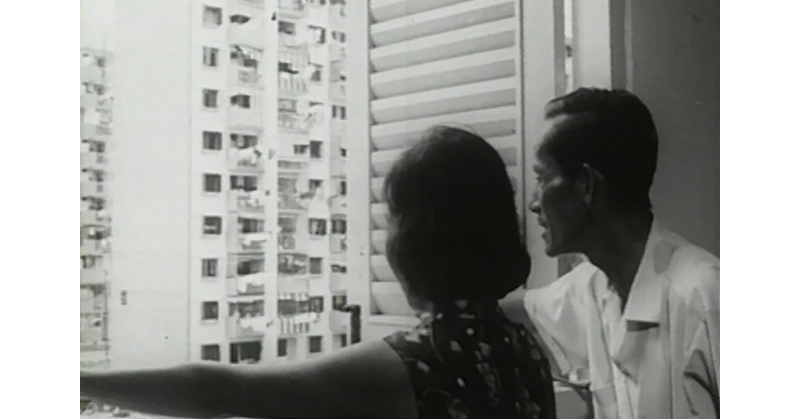
As the National Library Board celebrates its 30th anniversary in 2025, another milestone quietly unfolds at the National Archives of Singapore (NAS). The Audio-Visual Archives (AVA) department of the NAS also celebrates three decades of safeguarding and preserving Singapore’s audiovisual heritage.
The AVA department manages an extensive collection of audiovisual documents such as films, radio and television programmes. It also preserves audio records dating to as early as 1903. These records offer a glimpse into the rich tapestry of Singapore’s history, culture and heritage.
Setting up the Audio-Visual Archives Unit
Singapore’s broadcasting history goes back to 1924 with the launch of radio here. This was followed by the introduction of television in 1963.1 However the idea of systematically preserving Singapore’s audiovisual heritage only dates to the late 1980s.
The turning point came in 1989 with the landmark report from the Advisory Council on Culture and the Arts, chaired by Second Deputy Prime Minister Ong Teng Cheong.2 The council’s recommendation to “strengthen the national heritage collection in all media to cover sound-and-moving images” led to the setup of an AVA Unit within the NAS in April 1995. In preparation for a dedicated audiovisual preservation programme, the pioneers of the unit were sent for specialised training in Canada, the United Kingdom and the United States.
The new AVA Unit had modest beginnings. It operated with 13 staff members on project contracts: three archivists who would champion the cause of preservation, supported by 10 technical and support staff. The dedication and achievements of these pioneers over the next eight years proved significant. By 2003, what had begun as a project became a permanent division comprising 10 professional archivists, technical specialists and support personnel. With this came an annual preservation funding and the responsibility to preserve 5,000 hours of audiovisual records annually.
The transformation from a project to a permanent setup marked a crucial milestone in Singapore’s archival history. It acknowledged that preserving our audiovisual heritage required not just dedicated expertise but sustained resources and long-term vision. It also reflected the government’s recognition of the importance of audiovisual preservation and its commitment to protect Singapore’s audiovisual heritage.
Audiovisual Collections
Even before the NAS set up its dedicated audiovisual preservation facilities, it had already amassed some 8,000 reels of motion picture films and videotapes in various formats, each holding fragments of Singapore’s past.3 The film records came from a series of transfers in the 1980s and 1990s by government departments such as the Ministry of Culture, the Primary Production Department and the Mass Rapid Transit Corporation.
The videotape collection primarily comprised news programmes. In the mid-1980s, the NAS sent professional-grade videotapes to the Singapore Broadcasting Corporation to record live news broadcasts. This practice laid the foundation for what would become an extensive, multilingual news repository. In the initial years, due to the high cost of such videotapes, only English television news programmes were recorded every day. Daily vernacular news recording started almost two decades later.
Today, the Sound and Moving Image Laboratory (SMIL) of the NAS operates its own off-air recording facility. It records prime-time television news in all four official languages (English, Mandarin, Malay and Tamil) and CNA broadcasts. It has also preserved radio news in the official languages till 2023. These efforts ensure the documentation of Singapore’s broadcast news and multilingual media landscape.
The First Films
The first documentary films that came under the custody of the NAS were produced by the Ministry of Culture in the 1960s.4 Berita Singapura, a key series, was produced in a news magazine format to document Singapore’s economic and sociocultural developments. They were shot in 35 mm silent film and released with voice-overs in all four official languages and two widely spoken Chinese dialects (Hokkien and Cantonese).
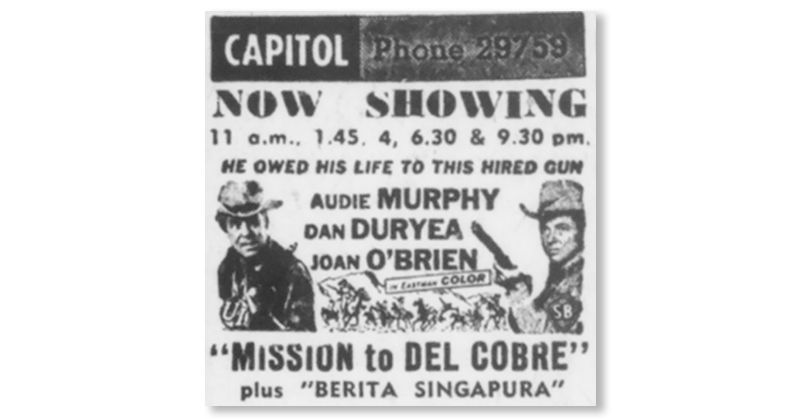
Each episode typically featured two to four segments, half devoted to serious informational topics illustrating schemes undertaken by the government for the benefit of the people, and the other half on light-hearted items depicting some interesting facet of Singapore life.5 This balanced approach both informed and entertained, making government policies accessible to the general public while celebrating Singapore’s diversity.
These films were initially screened in local cinemas.6 After Television Singapura’s historic launch on 15 February 1963, they were also broadcast on television. Versions in 16 mm format were issued to the Ministry of Culture’s Field Section for screening at public gathering spots such as community centres and rural villages. Copies were also made available in the film library for borrowing by schools, associations, clubs and other organisations.7
Highlights include a film titled Visiting New Flats, which captures a historic moment in Singapore’s public housing journey.8 In March 1967, residents from the Crawford and Outram areas were invited to tour their future homes in Toa Payoh housing estate. These weekend tours were organised by the Housing and Development Board for families who were being relocated from their villages.
The series also documents a charming slice of local culture from 1963, featuring an annual bird singing competition at the now-defunct Jubilee Malay School.9
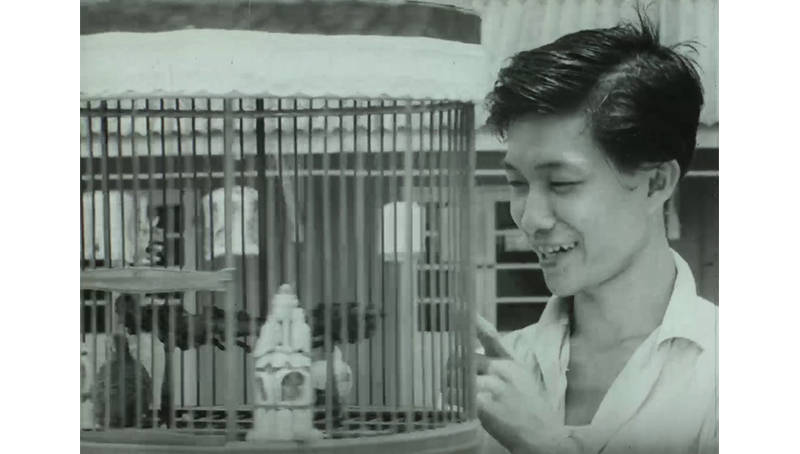
Radio and Television Programmes
The core of this collection lies in its extensive broadcast archives, encompassing materials from early broadcasters such as Rediffusion and the predecessor organisations of Mediacorp – Radio and Television Singapore, Singapore Broadcasting Corporation and Television Corporation of Singapore – as well as later entrants like Radio Singapore International and SPH MediaWorks.10
These records span more than seven decades of Singapore’s broadcasting history and are vital records of Singapore’s daily life and developments.11 They offer researchers and historians a window into the nation’s evolving media landscape, and gives the general public a chance to discover and relive the sounds and memories of yesteryear.
“Mr Toilet” and the Dialect Rediffusion Archives
When Governor Franklin Gimson officially launched Rediffusion (Singapore) in 1949, few could have predicted how deeply this commercial cable radio service would weave itself into the fabric of Singapore life. While Radio Malaya, the government broadcaster, maintained its official tone, Rediffusion carved out a unique space in Singapore’s cultural landscape through its vibrant Chinese dialect programming. For many Singaporeans, particularly those growing up in the 1950s to 1970s, Rediffusion was their primary source of entertainment and connection to their cultural roots, making it an integral part of Singapore’s social history.
It is not well known but Singapore nearly lost all its dialect Rediffusion archives in the mid-1990s. These were saved thanks to the efforts of Jack Sim, popularly known as “Mr Toilet”, the founder of the World Toilet Organisation. Sim recalled in his oral history interview in 2012 how he came to purchase and “rescue” the Rediffusion archives from destruction.
“When Rediffusion wanted to demolish their building in Hillview Road, there is a very big building and it has a lot of archive there, so I heard about it at a party in Cai Xuan’s (蔡萱)
house, Cai Xuan is a Senior Producer in Mediacorp and he is my neighbour, so I say, ‘Then, can I go and buy up the audio tapes?’ So he introduced me to the Rediffusion guy and then he has to ask his boss and it was really quite late when he told me, ‘You can have everything you want for $2,000.’”12
The only problem was that Sim was given only a day to collect them, and once he had done so, the building would be demolished. Unfortunately, the weather was not on his side.
“I ask the two workers to collect as much as possible, and then as we are collecting, about half a lorry then the downpour came, the rain was so heavy, so we could not collect some more, so we have to go, otherwise, we would have damaged a lot of the tapes.”13
Sim eventually donated over 4,700 open reels of Rediffusion broadcasts to the NAS for preservation. Some of the highlights in this collection include popular Hokkien radio plays adapted from the Chinese classic Journey to the West (西游记) performed by Rediffusion’s Hokkien drama group and Sunday Cantonese Drama (粤语星期日剧场) by its Cantonese drama group.14 Some of the performers in these early Hokkien radio plays, such as Lin Ru Ping (林茹萍), have become well-known local media personalities today.
Through Private Lenses: Home Movies
Beyond official broadcasts and government documentaries lie a more intimate window into Singapore’s past – home movies. These amateur films, shot on 8 mm, Super 8 and 16 mm film by ordinary citizens and expatriates working in Singapore, offer glimpses into the private lives of Singapore residents from the 1930s to the 1970s.
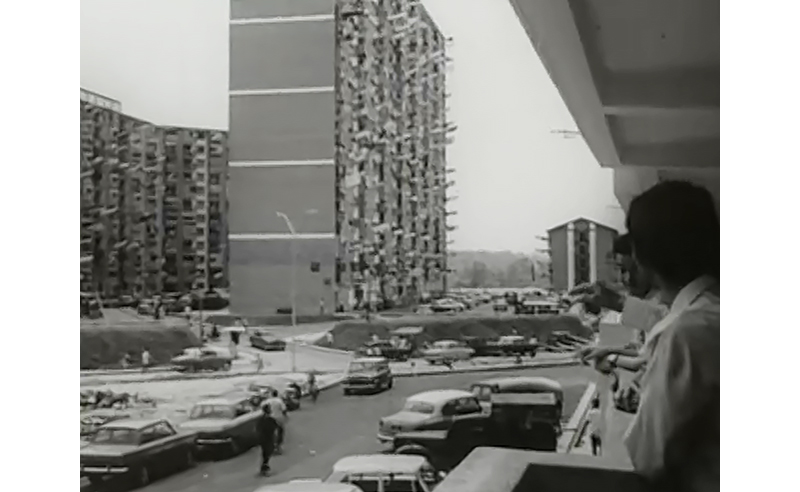
These early home movies are particularly valuable as they were made at a time when film cameras were luxury items typically owned by more affluent families and expatriates. Wedding ceremonies, birthday celebrations, family holidays in neighbouring countries as well as casual street scenes shot in Chinatown and by the Singapore River document Singapore’s family lives and changing urban landscapes as seen through private eyes.15
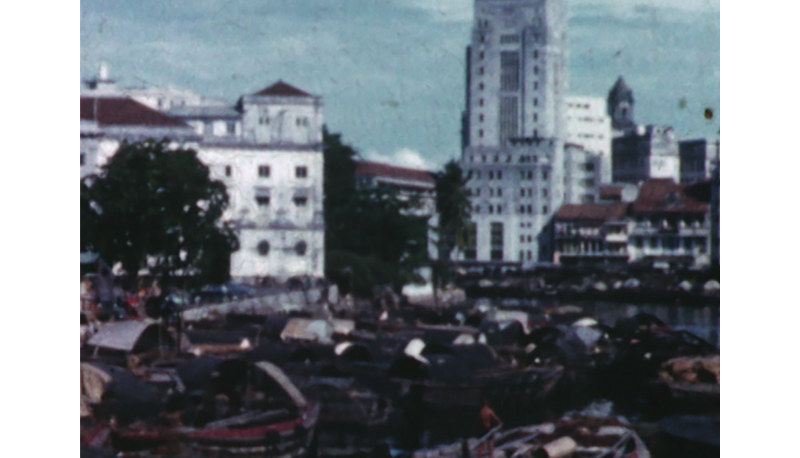
The oldest home movie preserved by the NAS is a 16 mm film titled Wedding and Family Footage of Peranakan Family, Circa 1930 from the Tan Geok Choo (née Law) Collection.16 Although the identities of the bride and groom remain unknown, this black-and-white film provides rare documentation of a Peranakan wedding and glimpses of family life during that era.
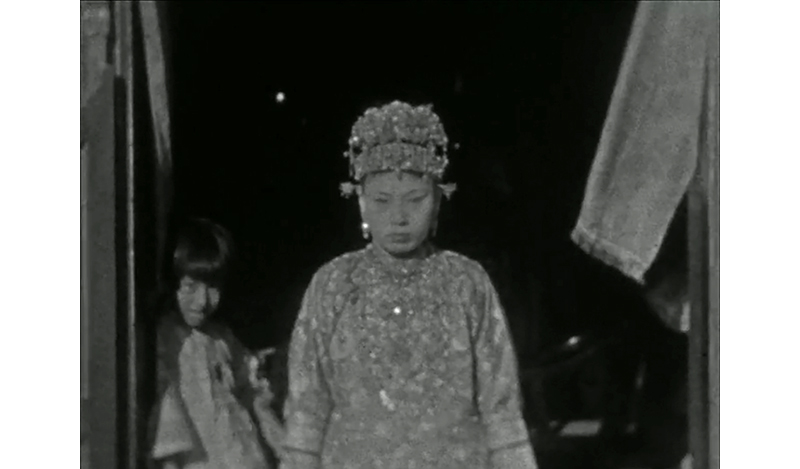
John Christianse’s Singapore 1960, on 8 mm colour film, showcases various street scenes in Singapore. Locations such as Chinatown, the Singapore River and the Kallang Basin areas have since undergone significant transformation or given way to urban development.17
Preservation Technology Then and Now
Three decades of dedicated acquisition and preservation efforts have transformed the NAS’s audiovisual holdings into a vast repository of more than 400,000 records. The archives, acquired through various channels including transfers, donations, purchases, off-air recordings and video documentation, have grown from a rich resource of official records to include personal memories of private individuals and soundscapes. The resulting collection offers a rich mosaic of Singapore’s past and present.
The evolution of audiovisual formats in the NAS mirrors Singapore’s broadcasting technological developments and adoption. In the days before television, when radio ruled the airwaves, the voices of Singapore were captured on open-reel tapes – both from Radio Singapore and Rediffusion. These magnetic reels preserve crucial moments of our nation-building years in the 1950s and 1960s and were used till the early 1990s.
Among these audio treasures are recordings that shaped Singapore’s political landscape: Prime Minister Lee Kuan Yew’s compelling 12-part Battle for Merger radio talks in English, Mandarin and Malay in 1961,18 the melodious Chinese election song encouraging the public to vote in the Legislative Assembly General Election on 30 May 1959,19 and the acceptance speech delivered by Minister for Foreign Affairs S. Rajaratnam on the admission of Singapore into the United Nations on 21 September 1965.20 Each reel captures not just sounds, but the hopes, anxieties and determination of a young nation finding its feet.
The arrival of television in 1963 ushered in a new chapter in the media archives. Initially, broadcasters relied on 16 mm silent films, with sound recorded separately on open reels – a technical challenge that required precise and meticulous synchronisation. The National Day Rally speech delivered in English by Prime Minister Lee at the National Theatre on 16 August 1968 was one example.
For many years, Singaporeans were unable to see and hear Mr Lee’s speech at the same time as the film footage captured only the moving image of Mr Lee
while the sound was recorded on an open-reel audiotape. However, digitisation of the film and the audio in 2015 enabled the preservation specialist to painstakingly synchronise the digitised image with the sound. This synchronised digital video has been streamed online for public access since 2016.21
A significant change came in 1967 when the Curriculum Development Institute of Singapore pioneered the use of two-inch quadruplex videotapes22 for educational programming, marking Singapore’s first steps into the video age. From 1967 to the 1980s, educational television programmes complemented classroom teaching and textbook learning.
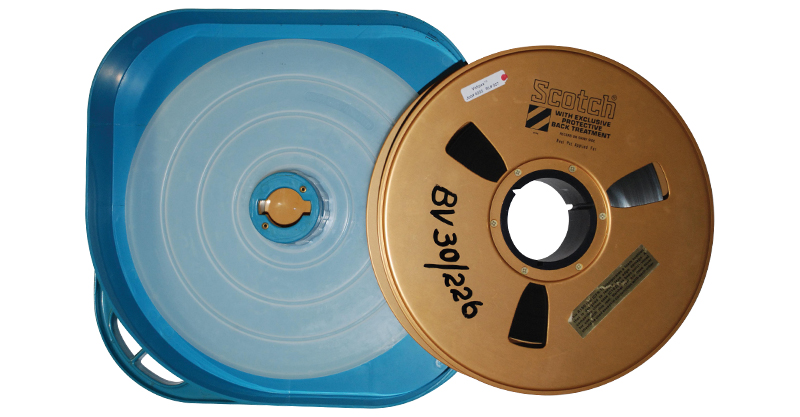
The 1970s brought further technological advancement with the introduction of one-inch Type B and C tapes. Radio and Television Singapore readily adopted these new formats, using them for recording current affairs programmes, school debates, music programmes like Talentime and variety shows in the studios. The one-inch tapes were replaced by betacam tapes and DVCPro tapes in the 1990s. For every format used by the broadcasting stations, the NAS had to correspondingly invest in a wide range of obsolete replay equipment to playback, manage and preserve these analogue formats used in production and broadcast.
A new milestone was reached in December 2013 when Singapore’s free-to-air television channels went fully digital.23 This shift to full digital production and broadcasting marked the end of physical tape formats, ushering in an era of digital audiovisual preservation in the NAS.
Futureproofing Our Shared History
Around the world, audiovisual archives are racing against time to digitise their magnetic tape collection. The Magnetic Tape Alert Project is an initiative that was launched in 2019 by UNESCO’s Information for All Programme Working Group on Information Preservation and the International Association of Sound and Audiovisual Archives.24 It sought to alert stakeholders and memory institutions of the imminent threat of losing access to their cultural and linguistic heritage trapped in obsolete magnetic media and the urgency to digitise them, preferably by 2025.
Memory institutions have begun digitising their magnetic tapes into digital files while the obsolete equipment that still exists to replay these tapes still works. This global shift represents not just a change in format but a fundamental transformation in how we preserve and how the public can access our collective memory.
Since the late 1990s, the AVA has digitised audio records on magnetic media, initially for improving access and later to safeguard the content from loss due to media obsolescence. In 2011, the department started the mass digitisation of at-risk audio, video and film records. These records were digitised to the highest archival standards before they become inaccessible or deteriorate irretrievably and are lost forever. These efforts ensure that the defining and unique moments in Singapore’s history and the important experiences of Singaporeans through the decades as documented in sound and moving images are preserved for generations to come.
See Us, Hear Us
The journey of accessing Singapore’s audiovisual heritage reflects the technological evolution of our times. Before 2011, researchers seeking to explore our recorded past had to visit the Archives Reading Room at the NAS building, where historical footage and recordings were available only on physical media such as VHS tapes and cassettes. This physical limitation meant that our rich audiovisual heritage remained largely confined within the walls of the archives.
The start of mass digitisation efforts in 2011 marked a turning point. Over the past 14 years, the AVA department has systematically transformed these analogue treasures into digital formats, gradually expanding access while carefully navigating copyright considerations and stakeholder interests.
Behind the scenes, the work of making these materials discoverable has undergone its own revolution. In earlier days, dedicated documentation officers would meticulously watch recordings in real time, carefully noting programme titles, creation or broadcast dates, languages, and drafting the content summaries. Today, while human expertise remains crucial, speech-to-text technology assists in enriching metadata, enhancing searchability and discovery of this vast digitised collection.
Challenges still persist in the access of content. Despite using technology to improve search, pinpointing specific moments within recordings remains time-consuming. Often, users conducting keyword searches must still view or listen to entire recordings to locate precise segments of interest, a process that can test the patience of today’s social media-savvy audiences.
Nevertheless, access to Singapore’s audiovisual heritage has never been more diverse or widespread. Through Archives Online, the public can now explore a selection of historical sound recordings in “Sounds of Yesteryear (1903–1941)”, an initiative launched in 2017 to trace the development of the recording industry in Singapore, and its recent sequel released in 2024 that covers the period from 1945 to 1955.25
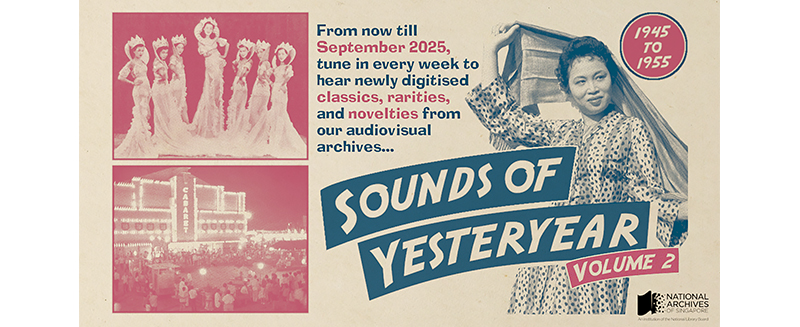
These collections have transcended traditional boundaries, finding new audiences through platforms like Mediacorp’s mewatch, where Stories of Yesteryear brings these historical treasures to contemporary viewers. Even air travellers can encounter curated selections from our archives through Singapore Airlines’ Museum Showcase series on KrisWorld.
This transformation from physical to digital access represents more than just technological progress, it reflects a fundamental shift in how we share and experience our collective memory. Machine learning and artificial intelligence (AI) are revolutionising how archives catalogue and access their collections. Besides speech-to-text technology, the AVA will continue to explore and use AI such as image recognition technology to identify faces and places in the vast video archives under its care and make them more searchable. It will pursue its objective to preserve and make Singapore’s audiovisual heritage more accessible than ever before.
Since its formation in 1995, the Audio-Visual Archives department has been proactive in forging ties with the international audiovisual archival community and professional associations around the world. These provide the forums for audiovisual archivists to congregate with the archive fraternity to exchange ideas and keep abreast of international and regional developments in audiovisual archiving, as well as seek new and continual training for archivists.
Some of the key audiovisual conferences, symposiums and workshops that the National Archives of Singapore (NAS) has hosted/co-hosted include:
• Joint IASA-SEAPAVAA (Southeast Asia-Pacific Audiovisual Archive Association) Conference, 3–7 July 2000. This is the first time that the International Association of Sound and Audiovisual Archives (IASA) held its conference in Southeast Asia. It also marked the first time that the National Archives of Singapore hosted an international conference on audiovisual archiving.
• ASEAN-COCI (Committee on Culture and Information) Workshop on the Preservation of Audiovisual Records, 17–20 November 2008.
• Workshop on Digital Preservation of Audiovisual Archives, 27– 29 February 2012. The workshop was organised as part of a series of skills development lectures and workshops tapping into Singapore-France funding.
• Joint Technical Symposium (JTS) 2016, an event of the Coordinating Council of Audiovisual Archives Associations. This is the first time that the symposium came to Asia since the JTS started in 1983. It was co-hosted by the National Archives of Singapore and SEAPAVAA.
• Workshop on Preservation of AV Materials, 24–25 June 2019. Organised in conjunction with the 2019 SARBICA (Southeast Asia Regional Branch of the International Council on Archives) International Symposium.
 Dr Phang Lai Tee is a Senior Principal Archivist at the National Archives of Singapore. Since her early days recording children's radio programmes at the Radio and Television Singapore, she has nurtured a deep passion for audiovisual archiving.
Dr Phang Lai Tee is a Senior Principal Archivist at the National Archives of Singapore. Since her early days recording children's radio programmes at the Radio and Television Singapore, she has nurtured a deep passion for audiovisual archiving. Notes
-
Chua Ai Lin, “The Story of Singapore Radio (1924–41),” BiblioAsia 12, no. 1 (April–June 2016): 22–27; Lau Joon-Nie, “Singapore TV: From Local to Global,” BiblioAsia, 12, no. 1 (April–June 2016): 32–38. ↩
-
Advisory Council on Culture and the Arts, Report of the Advisory Council on Culture and the Arts (Singapore: The Council, 1989). (From National Library Singapore, call no. RCLOS 700.95957 SIN) ↩
-
National Heritage Board, Annual Report 1995/96 (Singapore: The Board, 1996), 48. (From National Library Singapore, call no. RCLOS 363.690605957 SNHBAR) ↩
-
Ministry of Culture, “List of Documentary Films by Ministry of Culture,” 1952–1969, 16 mm films and video recordings. (From National Archives of Singapore) ↩
-
State of Singapore Annual Report 1960 (Singapore: Government Printing Office, 1960), 206. (From National Library Online). ↩
-
“Page 4 Advertisements Column 4,” Straits Times, 5 January 1963, 4. (From NewspaperSG) ↩
-
Ministry of Culture, “Visiting New Flats,” 1967, clip 2, 16 mm film, 02:06. (From National Archives of Singapore, accession no. 1982000183) ↩
-
Ministry of Culture, “Bird Singing Competition,” 1963, clip 3, 16 mm film, 01:30. (From National Archives of Singapore, accession no. 1982000048) ↩
-
Radio Singapore International was set up in 1994 to reach out to the region and help Singaporeans overseas keep pace with developments in Singapore. It ceased broadcasting on 31 July 2008. SPH MediaWorks was the second terrestrial television broadcaster in Singapore, established by Singapore Press Holdings in June 2000. It merged with Mediacorp on 1 January 2005. ↩
-
Mohamad Karazie and Tan Jie Ling, “The Awakening of the Modern Television Era: 50 Years of Colour TV in Singapore,” BiblioAsia 20, no. 3 (October–December 2024): 4–9. ↩
-
Jack Sim Juek Wah, oral history interview by Mark Wong, 11 June 2012, transcript and MP3 audio, Reel/Disc 16 of 16, National Archives of Singapore (accession no. 003716), 385. ↩
-
Jack Sim Juek Wah, oral history interview, 11 June 2012, Reel/Disc 16 of 16, 386. ↩
-
Jack Sim Collection, “厦语西游记:火焰山(第一场)Xia Yu Xi You Ji: Huo Yan Shan (1),” 2 March 1979, sound recording, 28:24. (From National Archives of Singapore, accession no. 2010002384); Jack Sim Collection,“粤语星期日剧场: 从心所愿 Yue Yu Xing Qi Ri Ju Chang: Cong Xin Suo Yuan,” 26 April 1979, sound recording, 29:30. (From National Archives of Singapore, accession no. 2010002403) ↩
-
National Archives of Singapore, “Home Movies,” 1930—–2023. (From National Archives of Singapore) ↩
-
Tan Geok Choo (née Law) Collection, “Wedding and Family Footage of Peranakan Family, Circa 1930,” 1930, 16 mm film, 06:44. (From National Archives of Singapore, accession no. 2010000429) ↩
-
John Christianse, “Singapore 1960 (Singapore Street Scenes),” 1960, 8mm film, 19:34. (From National Archives of Singapore, accession no. 2005003229) ↩
-
Radio Singapore, “Radio Talks By Prime Minister Lee Kuan Yew on ‘The Battle for Merger’,” 13 September 1961 to 9 October 1961, sound recordings. (From National Archives of Singapore, accession no. 1998001863) ↩
-
Radio Singapore, “选举歌 Election Song,” 19 May 1959, sound recording, 03:54. (From National Archives of Singapore, accession no. 1997019649) ↩
-
United Nations Radio, “S. Rajaratnam’s Speech on Singapore’s Admission to the United Nations at UN’s 20th General Assembly,” 21 September 1965, sound recording, 14:18. (From National Archives of Singapore, accession no. 1997021196) ↩
-
National Archives of Singapore, “National Day Rally Highlights,” 16 August 1968, video recording, 11.58. (From National Archives of Singapore, accession no. 2015004542) ↩
-
The two-inch quadruplex videotape format was developed and released by Ampex in 1956. ↩
-
Media Development Authority Singapore, “MDA Digital Switchover,” 21 April 2015 (Factsheet). ↩
-
The urgency to digitise documentary heritage stored on obsolete magnetic media was highlighted in the Magnetic Tape Alert Project. See Andrew Pace, “Magnetic Tape Alert Project,” International Association of Sound and Audiovisual Archives, accessed 6 April 2025, https://www.iasa-web.org/magnetic-tape-alert-project. ↩
-
National Archives of Singapore, “Sounds of Yesteryear (1903–1941)” and “Sounds of Yesteryear Vol. 2 (1945–1955),” shellac and vinyl records. (From National Archives of Singapore) ↩

